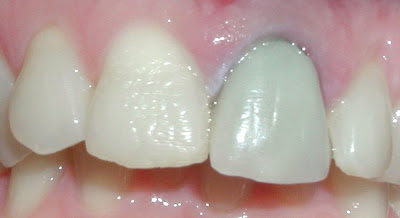Here is a case that went wrong, so we thought it would be a good idea to post it to our blog and discuss the learnings that can be had from it.
We made this bridge for a lovely dentist and his patient, however we asked if we could do some diagnostics first - unfortunately the patient wanted the bridge returned quickly so a decision was made to go ahead with no diagnostics.
The first bridge is the one on the right. We followed the original incisal length, however once it was tried in the patient felt they were too short, and we were instructed to lengthen them.
Seems simple right? Add some ceramic and we're done. Well, no actually. When we make a bridge with metal (as this one is) we make the metal accurately to support the ceramic evenly all over, so if we lengthen the ceramic there is a whole load of incisal ceramic with no support (this is why this bridge has a large cut incisally, we were testing to see if we thought we could lengthen without remaking the metal).
We felt in this case that we would remake the metal and start over. So we did and this is the bridge on the left.
According to the patient this is now too long!
So the solution? We highly, HIGH recommend doing a diagnostic wax up with cases like this, this then serves a few purposes.
- It can act as way for the dentist, technician and patient to visualise the desired results AND for the technician to ascertain whether the desired result is indeed possible with the position of the teeth and gums.
- It provides a template from which we can make a temporisation stent.
This second point is the crucial one in this case, if we had made a diagnostic we could have made a stent from this (pictured right) this could then have been used to make highly accurate temporaries which the patient could have worn to decide on the length.
If they were too long, a little reduction is simple - if the patient thought they were too short then addition with composite to achieve the desired result is again easy.
All that is then required is an accurate impression of the agreed temporaries and we can make the bridge to match this in the lab.
A simple process that is so often overlooked to the detriment of patient happiness!




















